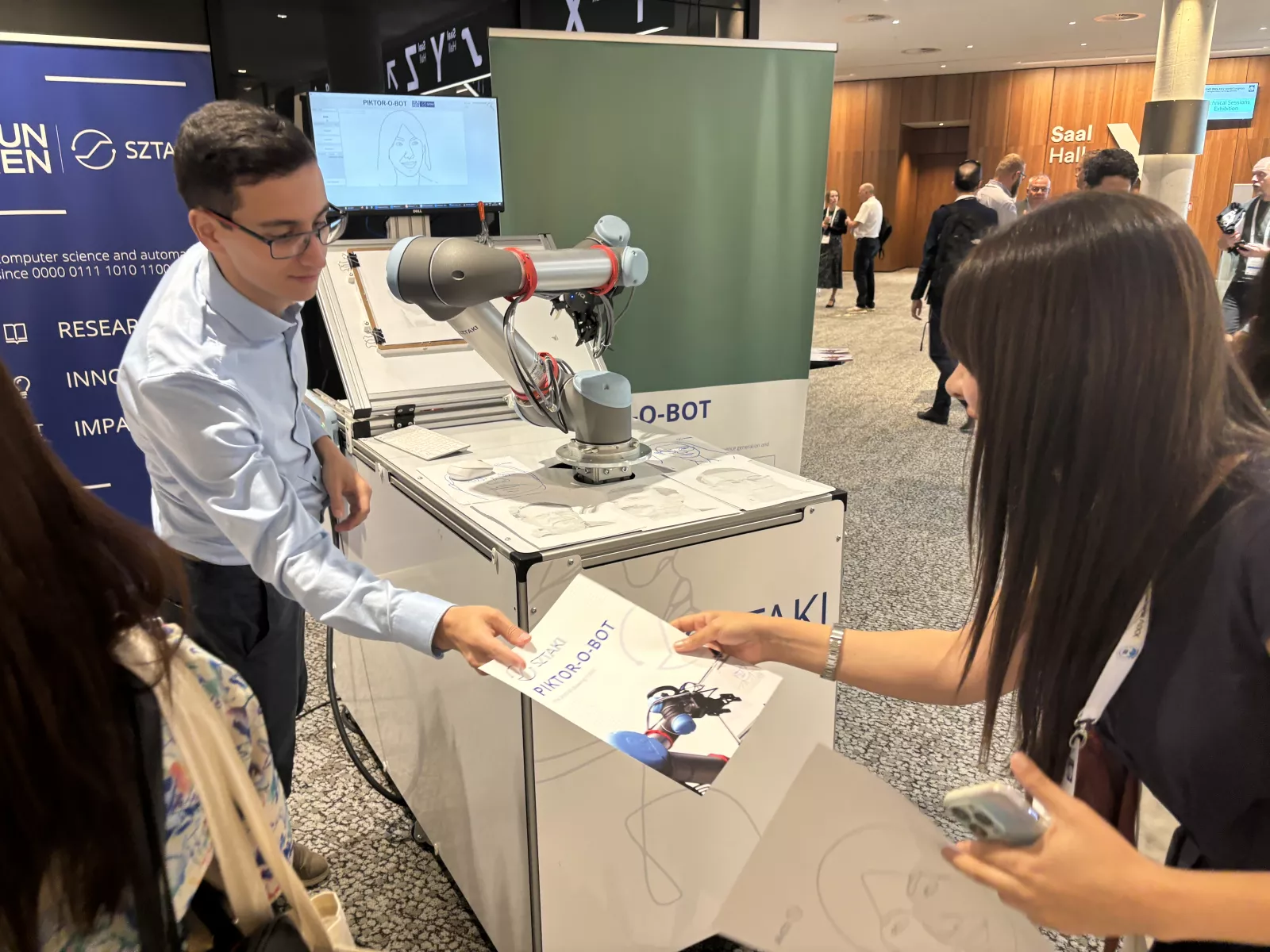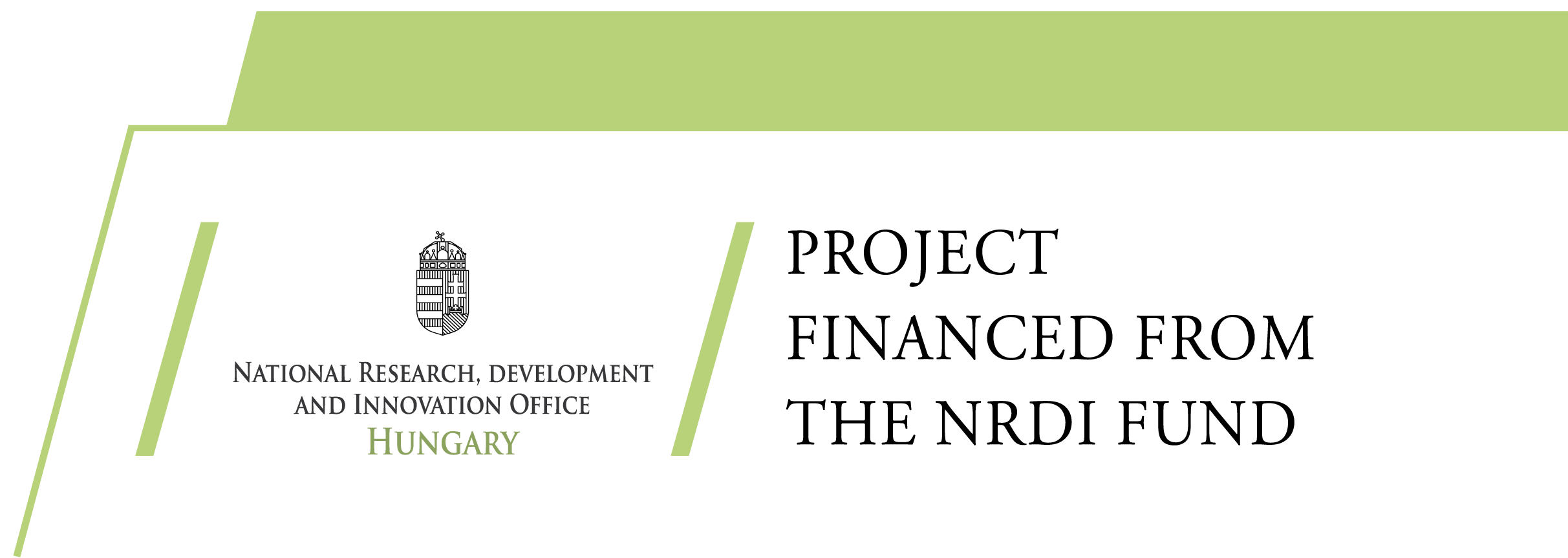
The HUN-REN SZTAKI's portrait-drawing robot worked its way through the 2024 conference held between 26 and 29 August, where two researchers from the institute also gave lectures on the its operation and development challenges. More than 200 drawings from around the same number of people were made during the event. Report.
The International Measurement Confederation (IMEKO) is an international, scientific organisation covering the complete range of measurement, which has 41 official country members from all over the world. IMEKO members present their scientific results at conferences in 25 different subfields every year. The sub-areas (TCs, Technical Committees) decide when and where to organize their annual conference, except for the world conference every 3 years, in such a year, IMEKO members come together in one place in the world.
This year, the event was held in Hamburg, where HUN-REN SZTAKI was also invited: two senior researchers of the Institute's Engineering and Management Intelligence Research Laboratory, the head of the Technical Committee 10: Measurement for Diagnostics, Optimization & Control, Zsolt János Viharos, and Jámos Nacsa, gave presentations on the first day. HUN-REN SZTAKI’s drawing robot was also exhibited, partially operated by research engineer Mátyás Hajós. Visitors were able to request their own portraits on each day of the event, in two versions: a traditional felt-tip vector version (which has been seen in many places) and a pencil-based polygonal satin portrait, developed especially for the conference. This gives a much more realistic result than the vector one, although it takes quite a long time (40-60 minutes), so fewer of these drawings have been produced. In total, more than 200 drawings of close to 200 visitors were produced.
Zsolt János Viharos spoke mainly about the many artificial intelligence algorithms operating in the robot: the machine, called Piktor-o-bot, first takes a photo of the subject, then analyses it through several processes, and finally vectorises it along the edges or transforms it into polygons, depending on the drawing technique. The lines drawn along the vectors, or the shadowed image built up by the polygons, are used by the robot to draw the subject, who is then presented with either a simpler or a more complex, more lifelike drawing. Based on solutions used in real industrial projects, this demonstration aims to show the capabilities of algorithms and collaborative robots. Drawing as such seems like a simple task, but for a machine it is very complex, incomparable to human experience.
Accordingly, János Nacsa emphasised the robotic and hardware challenges. The Piktor-o-bot uses a UR5 robot arm with a force sensor and gripper at the end. The former is responsible for ensuring that the latter always presses the marker or pencil onto the paper with the right force - again, a task that is simple as a human, but difficult as a robot. Nacsa's presentation reveals that even taking a photo is not an obvious task, as the robot needs the right lighting effects to "see" properly. The severaé iterations of the development process, which started five years ago, have highlighted countless problems, including the difficulty of recognising hair and the importance of accurately representing the human eye. A explanation video of the drawing robot can be seen here.
Speakers and organisers, as well as prominent members of IMEKO were also drawn by the robot. There was a drawing of outgoing President Frank Härtig and Professor Tilo Pfeifer, who, in addition to being an IMEKO member for 52 years, got a newly established award named after him - presented at the third day gala to Secretary General Zoltán Zelenka and his wife Kristine Zelenka, who is also the editor of the IMEKO newsletter – the couple were also drawn by the robot. But a portrait was also taken of the last day's keynote speaker, Professor Klaus von Klitzing, winner of the Nobel Prize in Physics in 1985, who, together with his wife, also modelled the HUN-REN SZTAKI machine. His drawing, as well as that of the President, was captured in separate videos, seen below.
The conference was launched with a ceremonial opening, during which the President of IMEKO, Frank Härtig, spoke about the achievements of the world organisation and its current situation. In his speech, the President pointed out that registrations had come from more than seventy countries, from Australia to China and Brazil. Mr Härtig was followed by Eva Gümbel, State Secretary for Science and Research, who welcomed the visitors and spoke briefly about the importance of science and IMEKO. The final keynote speech of the first day was given by Wynand Louw, President of the International Committee on Weights and Measures (CIMP) - the world's most important measurement organisation. Louw spoke about the challenges ahead for metrology, explaining that the next milestone will be to reform the measurement of time.
The keynote lecture on the third day was given by Stefan Hell, winner of the Nobel Prize in Chemistry 2014. The professor was presenting online and spoke about new developments in the past ten years since winning the Nobel Prize for his achievements in microscopy. He explained that the microscopy process that won him the Nobel Prize ten years ago has been followed by a solution ten times more accurate, and that this could have a huge impact in biology as well as chemistry: he cited the development of medicines as an example, because new processes can make the function of certain proteins more understandable and observable.
Finally, the closing keynote lecture was given by Professor Klitzing, who spoke about one of the most important milestones in the field of metrology, a discovery that also made possible the modern development of the International System of Units: the quantum Hall effect, which he discovered in 1980, made the 1-kilogram standard of weight measurement retireable in practice. In his presentation, he highlighted the challenges and often misunderstood solutions of quantum computing, and the fact that metrology is a discipline that brings together researchers from all over the world.
During the conference, various workshops and technical sessions also played an important role. The latter included presentations by the researchers of HUN-REN SZTAKI. Among the former, the metrology workshop co-organised by CIPM focused on the digitisation of traceability in measurement and calibration. Regarding the UN Sustainable Development Goals (SDGs), IMEKO pays particular attention to the research that can contribute to the achievement of the Goals - this is also indicated in the individual publications. The SDG workshop focused on the measurement challenges of zero-emission powertrains (hydrogen, electric) and second life of vehicle batteries, among others.
During the closing ceremony, a drawing of the HUN-REN SZTAKI robot was also placed on the President's slides. Professor Härtig thanked all the participants for their presence for the whole week and drew attention to the World Congress to be held in Rimini, Italy, in 2027, whose website is now live and can be viewed by clicking here.
In addition to the video material above, HUN-REN SZTAKI has also produced a summary video, which can be viewed above. Also, a gallery of photos from each day, available on the Institute's official Facebook page here, here, here and here.
